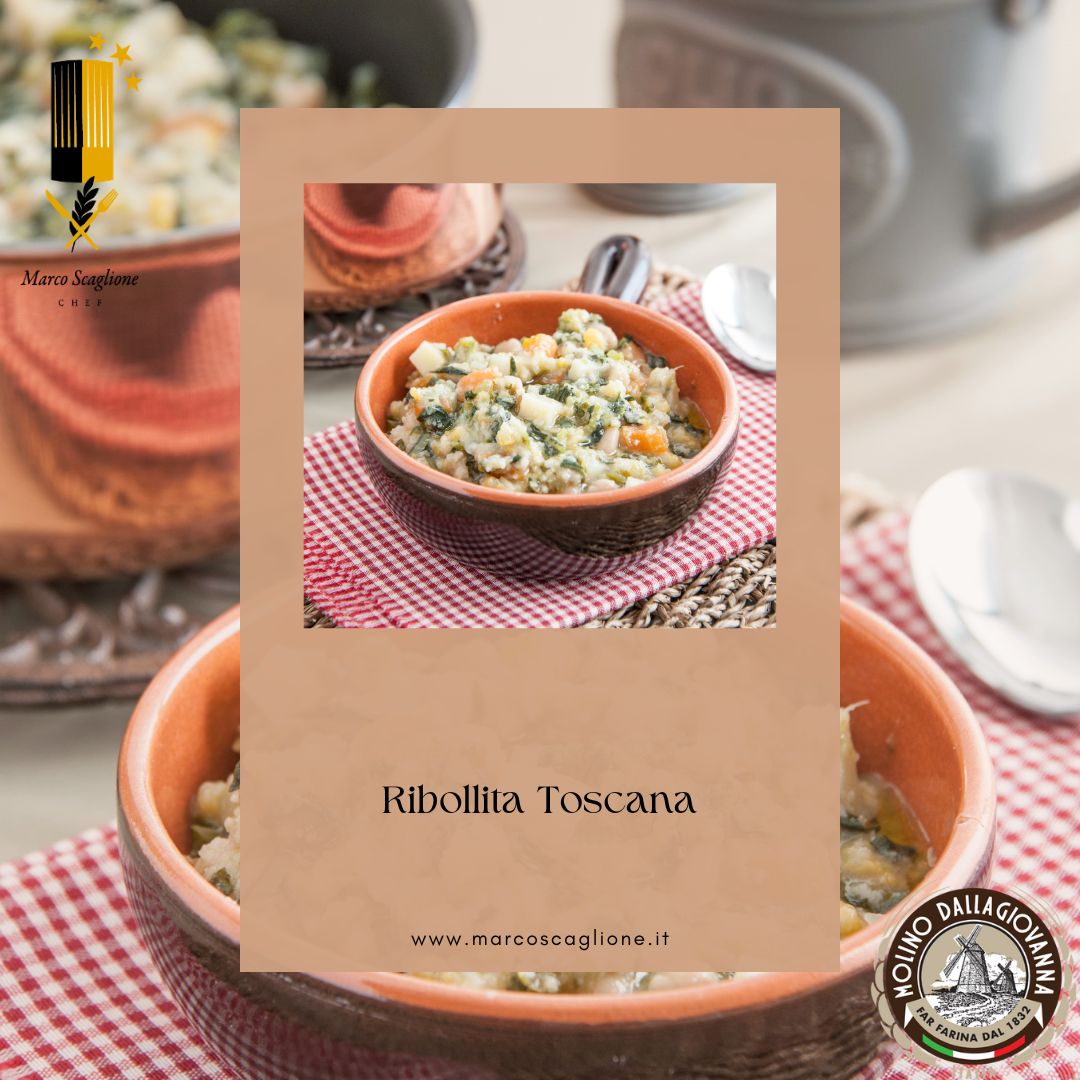
Marco Scaglione
My professional biography and my story are linked together they kept strong by a strap which is called passion. I'm lucky: I like my job, I enjoy it and it fills me with satisfaction.
It was born a new collaboration between Marco Scaglione and Aksum. Click on the logo and visit their site.
Ribollita Toscana
Full list
Time: 2 ore
Difficulty: media
A dish that has the taste of home, family. A typical dish of Tuscan tradition that I propose in gluten-free version!
Characteristics: The ribollita is the poor dish and peasant origin par excellence of Tuscan cuisine, it is a semi-solid soup that is prepared with bread silly stale, black cabbage and beans. Over time other ingredients have been added but the traditional Tuscan ribollita has only three elements, very poor, to compose the dish.
Historical notes: ribollita was officially born in 1910, the first year it is mentioned, thanks to the recipe book of Alberto Cougnet. However, ribollita is probably much older. Tuscan historians trace the ribollita at least to the sixteenth century, many even place it in the Middle Ages and is not such a pilgrim theory because medieval cuisine is rich in similar soups.
Note: it is so called because of its preparation: the peasants of a time cooked a large amount of soup because they then did not have time to take care of the kitchen and so this was "boiled" in the pan in the following days.
Ingredients for the bread base
500 g bread and pizza prepared Molino from Giovanna gluten-free and lactose-free
400 g water
18 g fresh yeast
20 g apple cider vinegar
20 g acacia honey
50 g Extra virgin olive oil
a pinch of ground black pepper
15 g salt up
Ingredients for 8 people
200 g dried cannellini beans
1 onion
2 carrots
2 ribs of white celery
1 bunch of black cabbage
1/4 of cabbage
1 bunch of chard
2 potatoes
1 porro
150 peeled tomatoes
300 g gluten-free bread (see recipe above)
1 l vegetable broth
1 sprig of thyme
extra virgin olive oil
salt up
ground black pepper
Bread making process:
Pour the mixture into a bowl and mix with a whisk, in a separate bowl pour the water together with the yeast and dissolve well, pour the liquid on the flour and knead until completely absorbed liquids.
At this point add the vinegar, honey and oil and continue to knead well for at least two minutes always squeezing with the palm of your hand, or slightly increasing the speed of the mixer.
With the help of a sprinkling of corn flour, remove the dough from the bowl, pour it on a cutting board and form a loaf.
Take six pieces of equal weight from the dough, to be shaped on a floured surface, to obtain long strands. Transfer to a baking sheet lined with baking paper and let rise for 1 hour.
After this time, brush the surface with an emulsion of water and oil, heat the oven to 230 ° and when it is hot cook for about 10 minutes.
After the first few minutes of cooking, lower the temperature to 210 degrees and cook for about 20 minutes.
At the end of cooking, take the bread out of the oven and let it rest for 20 minutes on a raised grill before cutting.
For the ribollita:
Soak the cannellini for about 12 hours in cold water, then rinse them, drain well and cook them in a pan with 2 liters of water initially for about 2 hours after boiling.
Meanwhile, peel the onion and slice thinly; cut out the carrots and celery, wash them and cut into slices. Remove the black cabbage from the hardest part of the coast, wash it and divide it into strips; remove the core and outer leaves from the cabbage, scrub it out, wash it carefully and cut the leaves in julienne.
Brown the onion in a "coccio" (terracotta pan) with 3 tablespoons of oil, then combine the carrots and celery, let it season for a few minutes, stirring constantly; then add the black cabbage, fry for 5 minutes, and complete with the cabbage, Cooking for another 5 minutes. Moisten with 2 ladles of vegetable broth and cook until the liquid is removed.
 English
English
 Italiano
Italiano
 Español
Español
 Francais
Francais



 Condividi su:
Condividi su:

